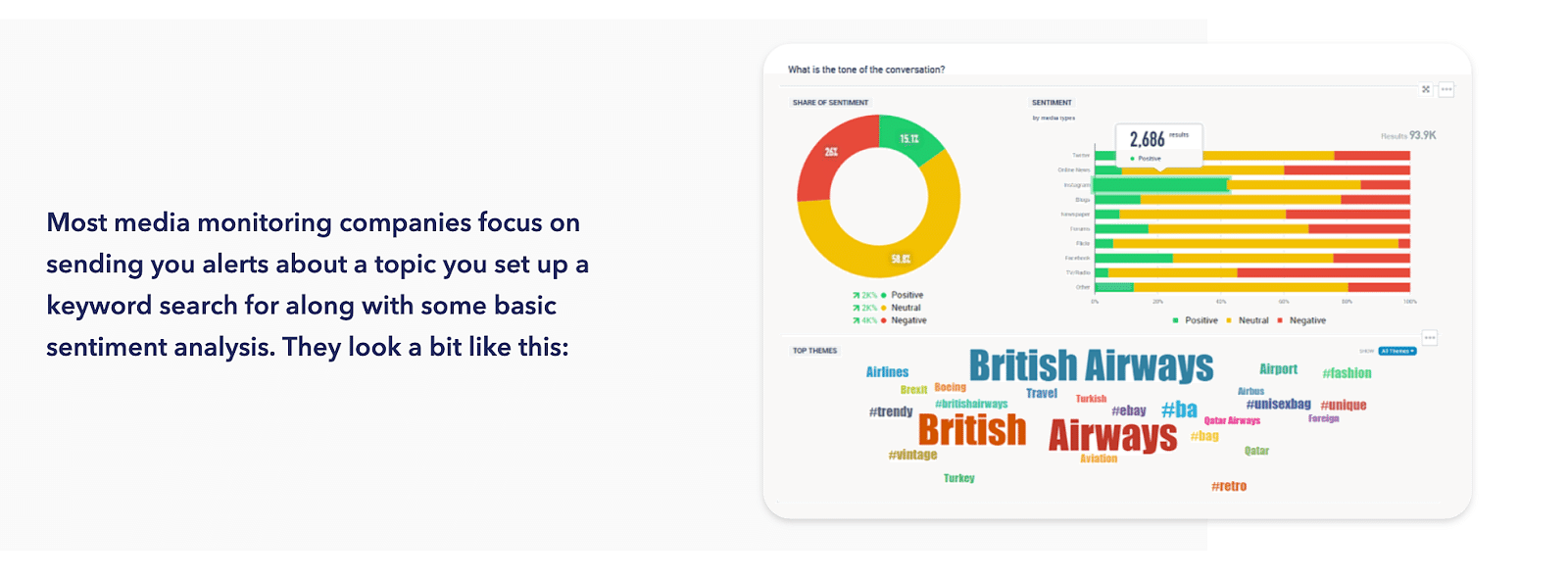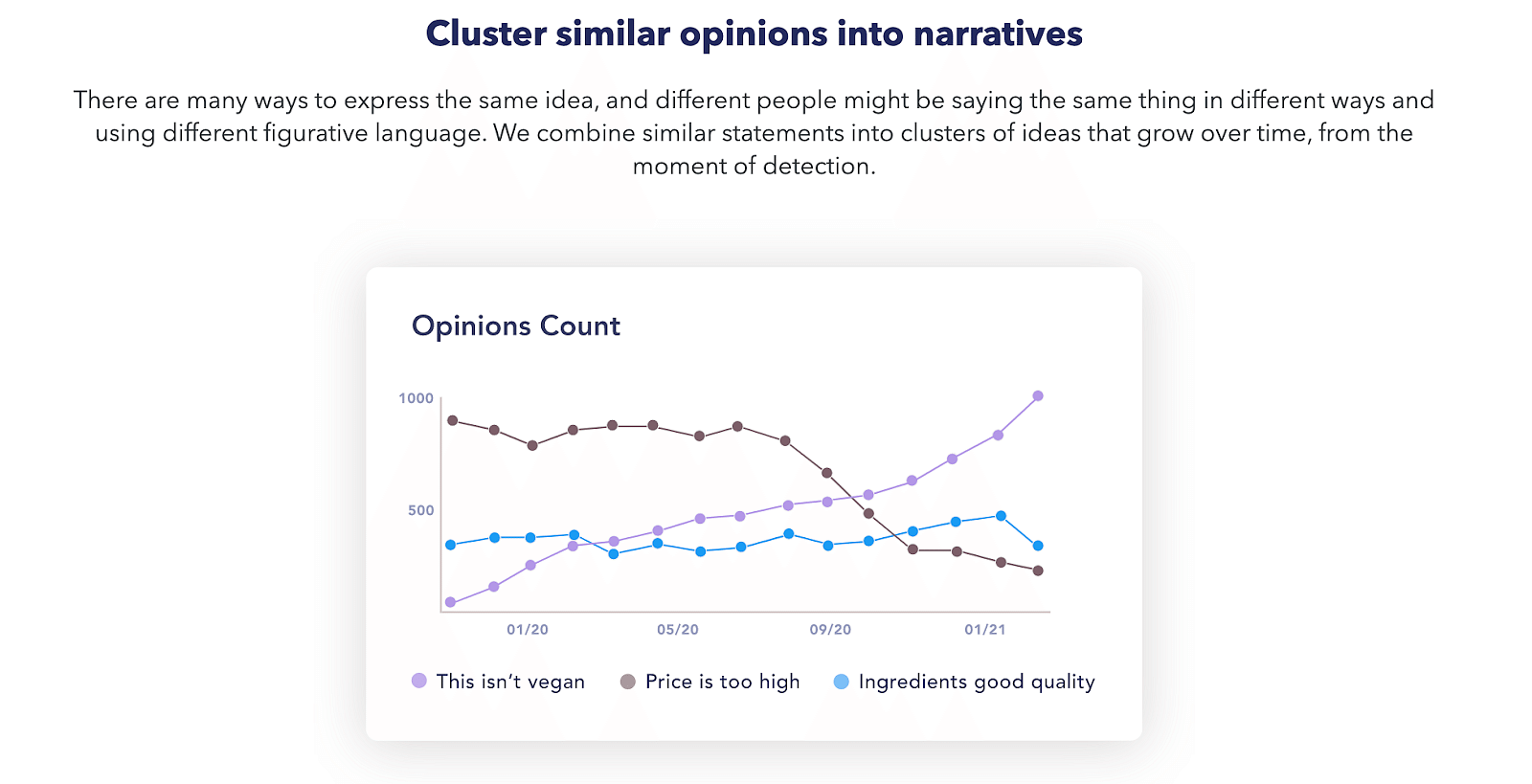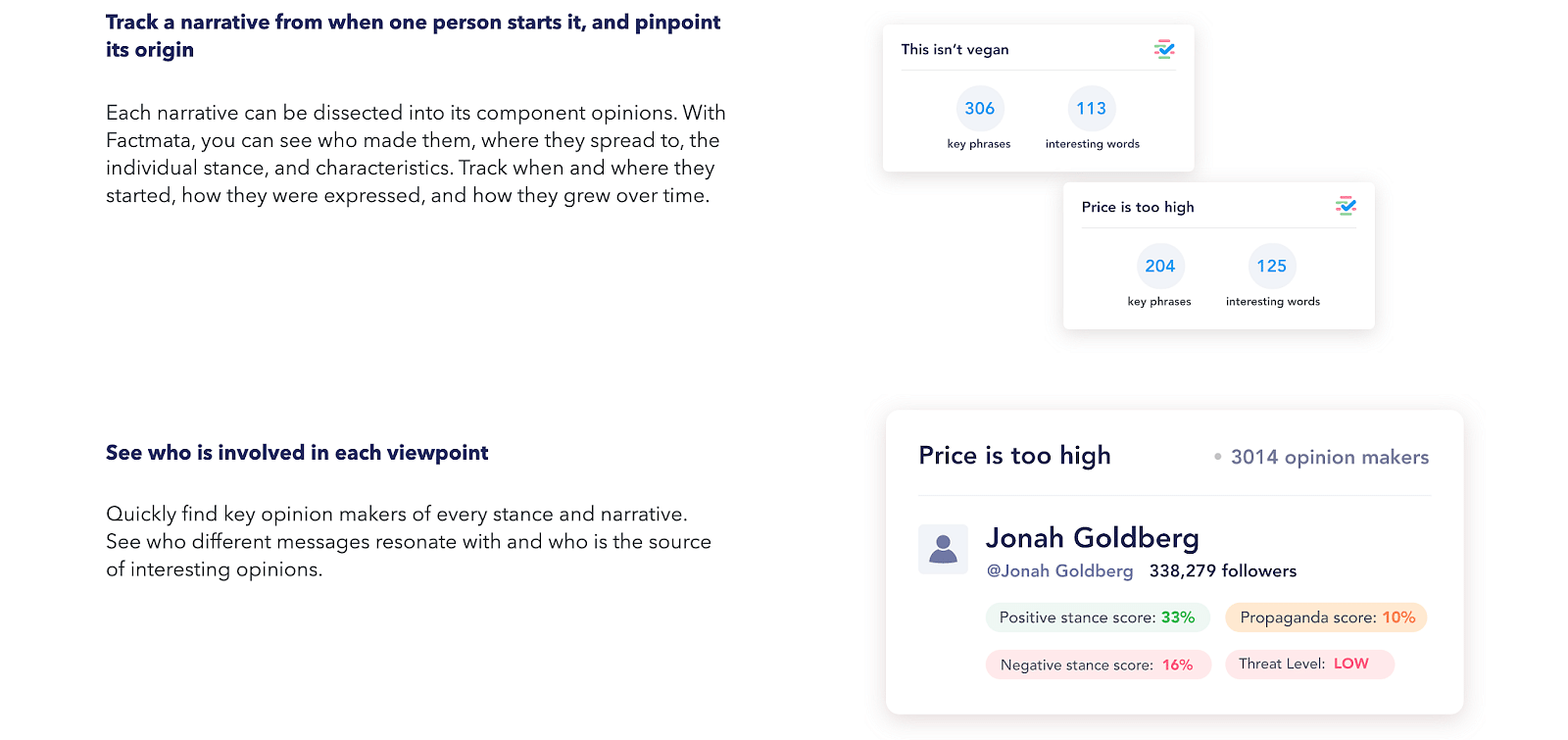
Don’t let toxic content kill your brand. Factmata’s technology can help you out.
By Jim James, Founder EASTWEST PR and Host of The UnNoticed Podcast.
Factmata is part of the so-called media-monitoring space. Chief Executive Officer Ant Cousins shared in one episode of The UnNoticed Podcast how their company helps businesses and organisations find out content being said about them in the digital world.
Image from LinkedIn
From Fact-checking to Media-monitoring
Factmata started off in the fact-checking space back in 2014. Founder Dhruv Ghulati, who then acted as their CEO of sorts, started working on this problem academically and scientifically: Fact-checking, in and of itself, was useful but it doesn’t touch on the commercially sustainable, scalable, and exciting part of the story. There’s a lot of harmful content out there. It’s not just mistruths, disinformation, and fake news — there’s racism, sexism, toxicity, and hate speech in general.
There are a lot of other things that are harming people, brands, and organisations. And this prompted Factmata to broaden their scope and refine their vision and approach, taking them to where they are now, which is the media-monitoring, brand-protection space.
Ant sees their company as something that can be compared to bigger players such as Brandwatch and smaller ones, including Social Mention. These companies work like how public relations have been previously run: It’s about getting the volume and sentiments as high as possible. Businesses want people from their target market to talk about them as much and as positively as possible. While accomplishing this is a great job, what they’ve found out is that there’s a need for more nuances — because negative narratives and sentiments being shared online can have a massive impact on one’s brand reputation, and ultimately, their bottom line.
Competitors that follow how PR was previously run are rather relatively simplistic. They can tell you how much you’re being spoken about and what the audience’s sentiment is, but they don’t tell you why it’s such. They don’t analyse the reason why these volumes and numbers are the way they are. Ant says that this was indeed actually hard to do until recently when Factmata was able to develop a technology that allows this kind of analysis.
In comparison to the other players in the media-monitoring space who only provide numbers, Factmata can go behind those numbers: Why is the volume the way it is? Why is the sentiment trending this way? What they do is automate the analysis — and this has been possible because of the recent advances in Artificial Intelligence.
Understanding Sentiments
To understand these numbers and sentiments, Factmata uses a topic clustering technology.
In terms of gathering data, they do the exact same thing as what other players do. They go out and find out all those mentions about you — including tweets, Facebook posts, articles. Then, it will produce a word cloud. However, as this doesn’t really state reasoning, they then run it through their topic clustering technology and get narratives out of it. They’re able to find common threads and narratives across different mentions and platforms. They use automation to identify these and provide you with data that you can look at and interact with.
Screengrab from Factmata’s website
Screengrab from Factmata’s website
Currently, most of their clients get mentions from the broader, easy-to-access platforms. Factmata focuses on content coming from such avenues, including social media. But as they also have arrangements with data aggregators, it’s possible for you to obtain a more specific set of data.
How Their Technology can be Used
Ant says that in general, their technology is being used to identify threat opportunities.
They can conduct a narrative analysis and give you the Top 10 by any metric — by the most positive, the most negative, the most racist, the most toxic, the most popular. With this, they’re able to provide you with the ability to understand those narratives in terms of whatever’s important to you. You can find the most negative and even identify the most negative influences or sources of these negative narratives. Who is promoting this? Are those significant people that you can engage with? Can you educate them to switch their views? Or are there people who disagree with their particular stance and counter those narratives?
Screengrab from Factmata’s website
Factmata can tell you both the narratives and the people that influenced these narratives. However, it all comes down to what really matters to you. If you’re interested in avoiding risks and crises, you can use their narrative identification service and look for the riskiest, most threatening, and most toxic content out there and base your strategies on that.
It’s important to note, however, that they can help with the longer-term kind of planning. The data that they provide is not real-time. One reason is that running a huge amount of content through AI entails hardcore computing. What they can provide is historical data, which can then be updated on 24-hour cycles going forward. With this, you can gain insight into whether a narrative is bubbling away or has the potential to trend.
During the podcast episode, Ant also shared that Factmata can currently work with English-language content. However, they’re now in the process of tackling other languages such as Spanish (which has a high volume of content). In fact, they’ve won an award from Innovate UK for developing multi-lingual models that deal with media monitoring.
On Choosing a Topic to Track
With Factmata’s technology, it’s absolutely possible for you to keep track of both absolute and relative narratives. You can track a topic that directly involves your business or a topic that’s about your competitors. For instance, if you want to track Pfizer or Moderna, you can use their technology to look into the conversations that go around these topics — the misinformation, the people’s sentiments, and others.
One thing that they do differently from others players is that they don’t just track sentiments objectively (i.e., is this sentiment positive, negative, or neutral?). They are also about stance. They go for the layer on top of the sentiments. For example, there could be a tweet about Alex Salmond that has a negative sentiment. However, if you look at the bigger picture, that tweet can be treated as positive and in favour of the topic of Alex Salmond as a whole. With Factmata, you’d have two different lenses that can help you analyse so much more, especially when you’re doing influencer analysis.
Another example of how their AI technology helps, in this case, is when they did an analysis about a company that makes protein powder. Their client wanted to know what people are saying about their products. When they tracked, there’s one specific comment that has the phrase “sickly sweet.” They identified it as a negative though it has a positive word (“sweet”). Because when that positive word was paired with “sickly,” it becomes a negative sentiment towards the product.
Screengrab from Factmata’s website
Understanding the sophistication of the English language (e.g., when an adjective is attached to a noun, the whole meaning can be modified significantly) is something that Factmata has been working on over the last three or more years. And their models have been trained to take on that level of complexity. Because of it, they’re also able to track and pick up ironies and other modifiers in context. Though it is not 100% perfect, their technology is reliable enough to give sound data and statistics.
What’s Next?
The first step in their process is identifying a narrative. You’ve got to know what’s being said about you and understand who is behind it — their motivations and intentions. With Factmata, you can find all this information. They can also arm you with keywords and associated phrases that go along with those. This is vital especially if you’re trying to track hashtags or finding where else those conversations are happening.
The next on their roadmap is to help you with the creation of content based on their analysis. After knowing the narrative that you want to beat, you can then look into a narrative that can counter that. What is the volume and sentiment of that narrative? Who are its influences? By knowing these, the least that you can do next is to support and help facilitate the counter narrative’s exponential growth.
The next phase in their intelligence roadmap is to automatically identify such narratives and influences on your behalf.
On Countering Bots
Today, companies are also vulnerable to foreign agents and bots that post negative narratives about them.
For Ant, however, it really doesn’t matter where the negative narratives are coming from. Once these have already been picked up, then there are already going to be humans involved. In the first place, this is the aim of bot farms: To get humans to see what they post and immediately share it. By the time you are seeing those negatives, it’s already too late because the bots have already done their job.
Image from Unsplash
What Factmata can help you with is to identify those narratives much earlier in the cycle — when it could still be largely bot-driven. What they try to do is give early warnings so that you can already start measures to take them down, or identify their potential trajectory then head it off afterwards.
Here, contextualisation is also being used. Factmata’s technology works to get that context as early as possible before humans can spot the trend. They will spot a narrative — which can be potentially toxic, racist, or harmful — and flag it to you.
The opposite also applies. Think of their technology as a tool in which you can find positive opportunities for your brand as well.
Transparent Pricing
Factmata, according to Ant, is aiming for a broad market. This is why they don’t offer their technology expensively at the moment. Their pricing is relatively transparent and simple. If you want to track your brand or your competitor’s, it’s around $1,000 per topic on a monthly basis. This covers obtaining daily updates and intelligence insights.
They’re also working on a simpler version of the product (something similar to the Experian credit score approach) for a cheaper price. This simplified version can be useful for all companies and serve as their firewall against harmful narratives, fake news, and the like.
To learn more about how you can track if your business is getting noticed — and whether it’s good or bad — visit https://factmata.com.
This article is based on a transcript from my Podcast The UnNoticed, you can listen here.
Cover image by Fredrick Tendong on Unsplash.







